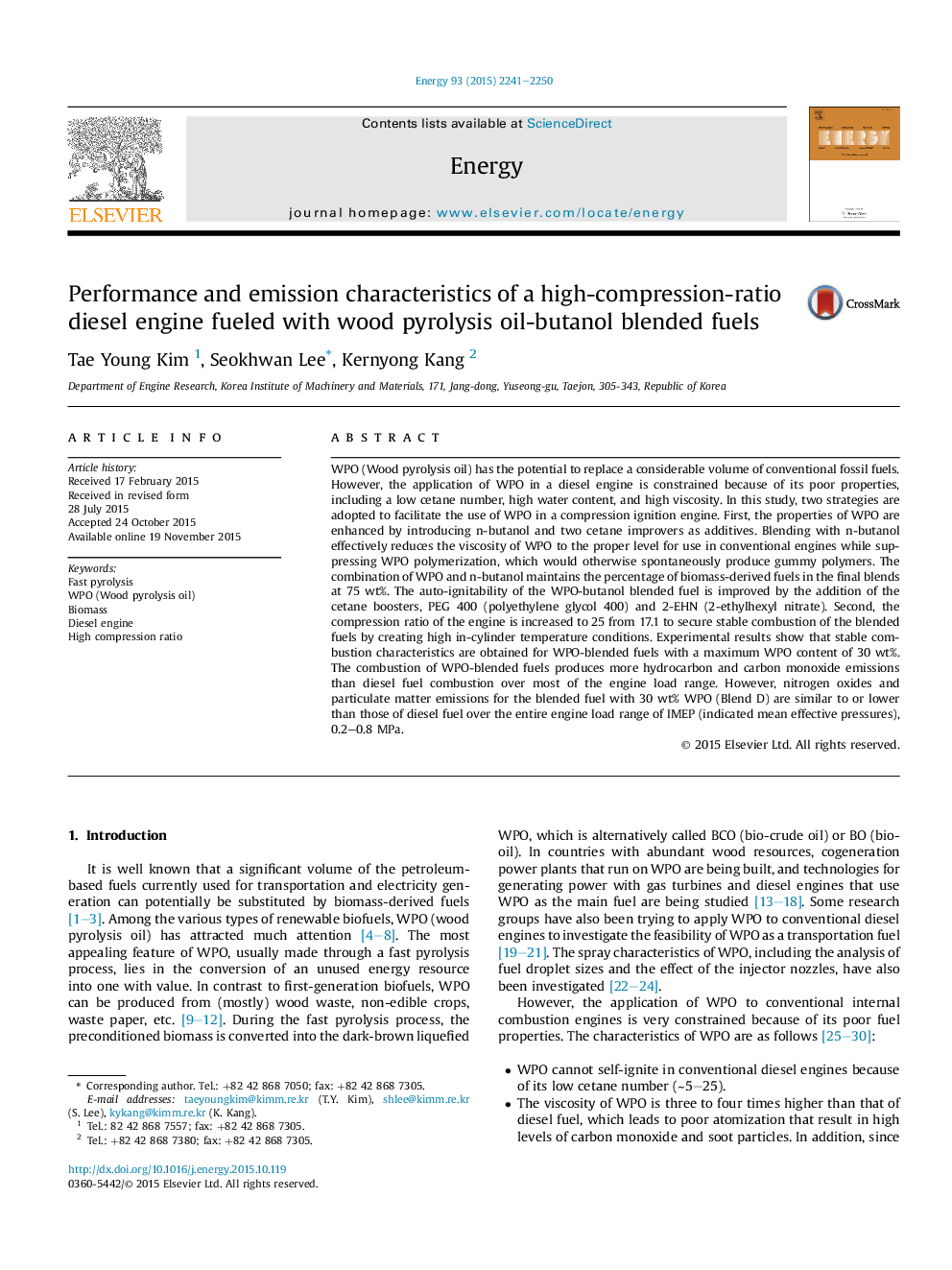| کد مقاله | کد نشریه | سال انتشار | مقاله انگلیسی | نسخه تمام متن |
|---|---|---|---|---|
| 1731659 | 1016095 | 2015 | 10 صفحه PDF | دانلود رایگان |
• WPO-butanol blended fuels are introduced to improve fuel properties of WPO.
• The compression ratio is increased to secure combustion stability for blended fuels.
• The blended fuel with 30 wt% WPO has lower NOx and PM mass emissions than diesel.
WPO (Wood pyrolysis oil) has the potential to replace a considerable volume of conventional fossil fuels. However, the application of WPO in a diesel engine is constrained because of its poor properties, including a low cetane number, high water content, and high viscosity. In this study, two strategies are adopted to facilitate the use of WPO in a compression ignition engine. First, the properties of WPO are enhanced by introducing n-butanol and two cetane improvers as additives. Blending with n-butanol effectively reduces the viscosity of WPO to the proper level for use in conventional engines while suppressing WPO polymerization, which would otherwise spontaneously produce gummy polymers. The combination of WPO and n-butanol maintains the percentage of biomass-derived fuels in the final blends at 75 wt%. The auto-ignitability of the WPO-butanol blended fuel is improved by the addition of the cetane boosters, PEG 400 (polyethylene glycol 400) and 2-EHN (2-ethylhexyl nitrate). Second, the compression ratio of the engine is increased to 25 from 17.1 to secure stable combustion of the blended fuels by creating high in-cylinder temperature conditions. Experimental results show that stable combustion characteristics are obtained for WPO-blended fuels with a maximum WPO content of 30 wt%. The combustion of WPO-blended fuels produces more hydrocarbon and carbon monoxide emissions than diesel fuel combustion over most of the engine load range. However, nitrogen oxides and particulate matter emissions for the blended fuel with 30 wt% WPO (Blend D) are similar to or lower than those of diesel fuel over the entire engine load range of IMEP (indicated mean effective pressures), 0.2–0.8 MPa.
Journal: Energy - Volume 93, Part 2, 15 December 2015, Pages 2241–2250
